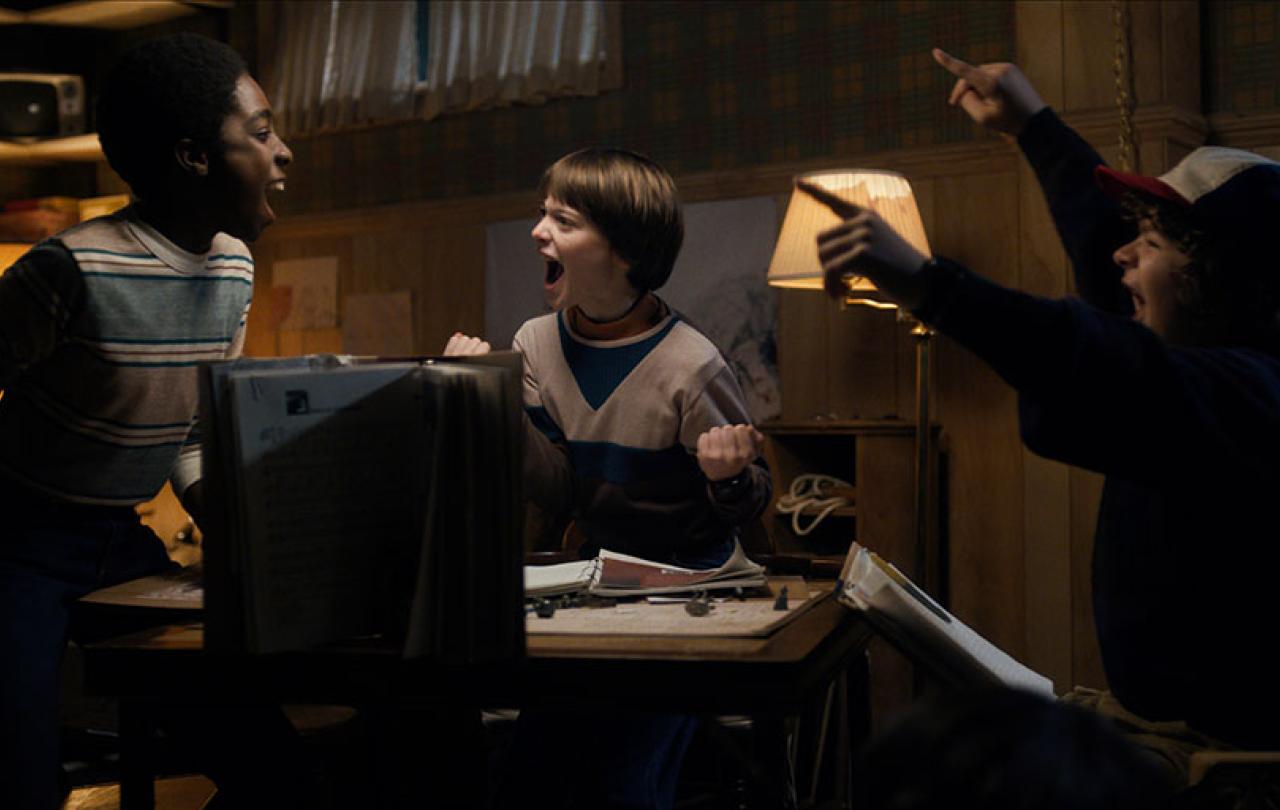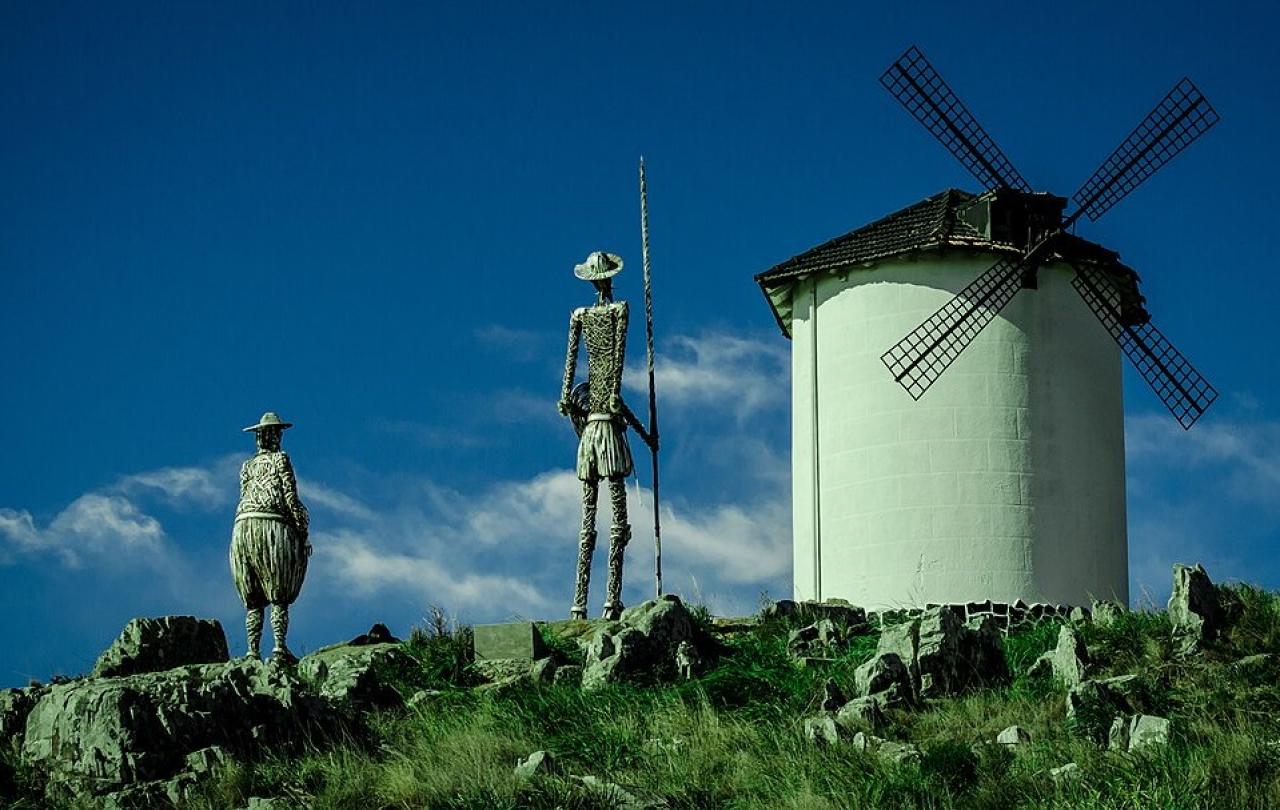
Picture this: no longer are you sitting at a computer desk or staring at your phone during your commute. Instead, you are an intrepid explorer, a noble warrior, or a cunning thief. You have left behind the mundanity and anxieties of the 'real world'. Now, you are a protagonist in a new story.
Your choices will shape the world around you; your actions will be written into legend and recounted for centuries. But this is not done in isolation. You are together with friends. You work as a team; you bond, laugh, and celebrate each other’s achievements as a unit. You are not alone; you are an adventuring party.
Behind the grey skyline through the condensation-heavy glass of the train window is a world of infinite possibilities. Here, in your mind’s eye, you shape reality. Here, you become the person that, right now, you want to be. There are no limitations beyond what you believe is possible. You are the captain steering the ship into uncharted waters where the aim is to share a good yarn with your friends.
There's a fine line between fantasy as a genre and escapism as a psychology. As we parade myth and legend within our respective cultures and contexts, we find something of ourselves. We read of Frodo Baggins, the underdog who takes on a responsibility of epic proportions, and see qualities we want to inhabit. We hear of Iron Man's sacrifice to save friends and see something of our own relationships. This is not to say we literally aim to overthrow a dark lord or defeat a purple space utilitarian, but we see the humanity reflected within relatable moments through the fiction. The story we read or watch somewhat touches the cadence of the 'real world' no matter how fantastical.
In an age where this cadence and its story-focused elements are twisted to become more marketable, where is the authenticity? How do we begin to tell our own stories? Is there a way in which our stories can speak of this cadence of the ‘real world’ without the necessity to satisfy business?
As the game creates a safe environment in which players can enact hypothetical scenarios. In other words, to fantasise about who they are and the world around them. Consequently, there is an opportunity to ask again: "What story do I want to tell".
Enter stage left: Table-top Role-playing Games (TTRPGs). The picture painted in the opening paragraph is steeped in my experience of commuting. Although not a universal experience, I found commuting sucked all life from my world. If there is a hell, perhaps it is a continuous never-ending loop of the Northern Line. I found myself recounting the previous evening, time spent with friends playing the fantasy TTRPG Dungeons and Dragons, reflecting on what I had learnt from such an experience. As a theologian, I would ask if there was something of myself that I was seeing in the stories told. When I returned next time, where did I want this story to take me next? What story do I want to tell?
Dungeons and Dragons, or D&D, has been propelled into the cultural zeitgeist in the last decade. Featured in popular television shows such as The Big Bang Theory and Stranger Things, D&D has emerged out of nerd basements and into the mainstream. No longer is D&D seen as something exclusively for 'mega-nerds'. It now stands shoulder-to-shoulder with other culture-shaping fictions, such as The Lord of the Rings and the Marvel Cinematic Universe.
In 2014, the fifth edition of D&D and aimed to streamline and tighten up the accessibility of the game whilst promoting creative and complex storytelling as a valued method of playing. In its earliest editions, D&D didn't care for character backstory or where the dungeon came from. A player’s aim was simply to kill some baddies and find treasure. However, today’s D&D aims for more nuance. Psychologists Sören Henrich and Rachel Worthington highlight that this has allowed D&D to have a genuine therapeutic application. As the game creates a safe environment in which players can enact hypothetical scenarios. In other words, to fantasise about who they are and the world around them. Consequently, there is an opportunity to ask again: "What story do I want to tell".
Perhaps the most obvious example of this philosophy in action is the role D&D takes in Netflix's Stranger Things. The show is not explicitly about D&D. Rather, the game is used as an illustrative tool, showing the actions of the characters, as well as providing a metaphor for the mystery they uncover and the journey they go on.
The show opens with four young boys playing a game of D&D in their parents' basement. The players discover a Demogorgon, a classic D&D monster, and they must work together to defeat it. However, their immaturity gets the better of them and they fail. In D&D, player characters take on different roles; it is only by working together that their various weakness can be supported, and the villain defeated. This is the lesson that the boys learn: teamwork. It is only when they learn to support one another that are they able to defeat the 'real-life' Demogorgon they discover in their small American suburb.
Nine belonged with his friends, he was not simply 'put up with'. His style of encountering problems and solving puzzles strengthens the whole team. Nine was not a burden.
In Stranger Things we find D&D acting not just as a thematic motif, but also as illustrative of a journey the young people go on. So, what are the philosophical mechanics behind this? How is D&D as a phenomenon transformative and illustrative in our present reality? Philosophers describe this sort of thinking as 'Phenomenology'. In simplistic terms, it concerns the lived experience of a phenomenon, seeking to uncover its essence. What actually makes that 'thing' you experience a 'thing' at all? Are there attributes that are common across all experiences of that phenomenon? Or, more likely, is there a rich and informative complexity to its innermost workings?
Whilst I am far from describing what the essence of D&D as a phenomenon is, I can speak of my own lived experience in the hope that it demonstrates how D&D is the transformative tool Stranger Things positions it to be. I hope that this not only illustrates my argument, even if it is as simple as “D&D is good”, but also provides a window in which my own story can be understood.
I have written elsewhere about the role D&D has played in my theological evaluation of complex theoretical ideas. It has ultimately shaped the way I research and encounter complex questions. However, I want to highlight something different. In my other work, I spoke of a character I played for three years, a Tabaxi Paladin named 'Nine'. Nine was somewhat of an experiment. After I was diagnosed as autistic, I found great difficulty in knowing who I was. Are there parts of me that are not autistic? Am I being autistic subconsciously? Or am I actively choosing to act in a way that a clinical professional has decided is autistic? Who am I? Nine was to be a method of exploring such questions. I wrote Nine as autistic in a way that was a somewhat exaggerated version of myself. Yet, there was a distinct difference. Nine was the 'me' who had come to terms with being autistic; Nine knew who he was and was proud of it; Nine just simply was Nine.
This was obviously not a perfect solution; the world of D&D does not have the clinical vocabulary to describe autism. In fact, whether autism exists in a fantasy world is kind of a fuzzy question. Was I inventing autism within the world by playing a character in such a way? Or is there ever a way I could not play a character as autistic due to being autistic myself? What emerged through Nine's interactions was something that, on a very personal level, I found deeply satisfying, illuminative, and transformative.
Nine developed, some might say unsurprisingly, relationships among the other player characters. He lived as I do, as a social creature in a social world. Whilst his interactions were sometimes unusual, perhaps in much the same way as my own, his friend still came to love him. Following the framework of theologian John Swinton, Nine was more than just included; Nine belonged to this group simply because in his absence he would be missed. Once I had realised this I was taken somewhat by surprise. The differences between Nine and the other characters still mattered, but they were not barriers. Nine was valued, not someone who just was difficult to approach, off in his own little world, or obsessed and hyper-fixated. Rather, he was one part of the whole. Nine belonged with his friends, he was not simply 'put up with'. His style of encountering problems and solving puzzles strengthens the whole team. Nine was not a burden.
D&D highlights the strength storytelling, narrative building, and art in all its forms, have for those who are coming to terms with their identity.
This was where the transformation occurred. I realised that I was the Nine who did not have this understanding. Harry erroneously believed that he did not belong when really he always did. Harry was embarrassed about his challenges with social engagement, his obliviousness to the world around him, and his inability to get through a conversation without talking about Doctor Who. Yet, here I was, among friends who cherished and valued me. Here, I truly did belong, and it was Nine who taught me that.
I hope that this illustrates just a snippet of the potential this game, and games like it, have to offer. I believe there is much more to be said about the philosophical truth spoken through D&D in much the same way we talk about other forms of art or narrative. This is just a portion of what is possible, and I hope I learn much more about myself as I continue along these adventures with my friends. I would encourage anyone reading to give D&D a go. Although, I am aware I have had a very specific and positive experience that is not universal among players of the game. Perhaps the focus should not be that D&D is the best tool for therapeutic action. Rather, D&D highlights the strength storytelling, narrative building, and art in all its forms, have for those who are coming to terms with their identity. Whilst we may be tempted to describe ourselves simply, as I was when I was diagnosed as autistic, D&D reminds us that the stories our lives tell will always demonstrate more depth. Our lives our simply stories that we are constantly engaged with and that we are always telling.





